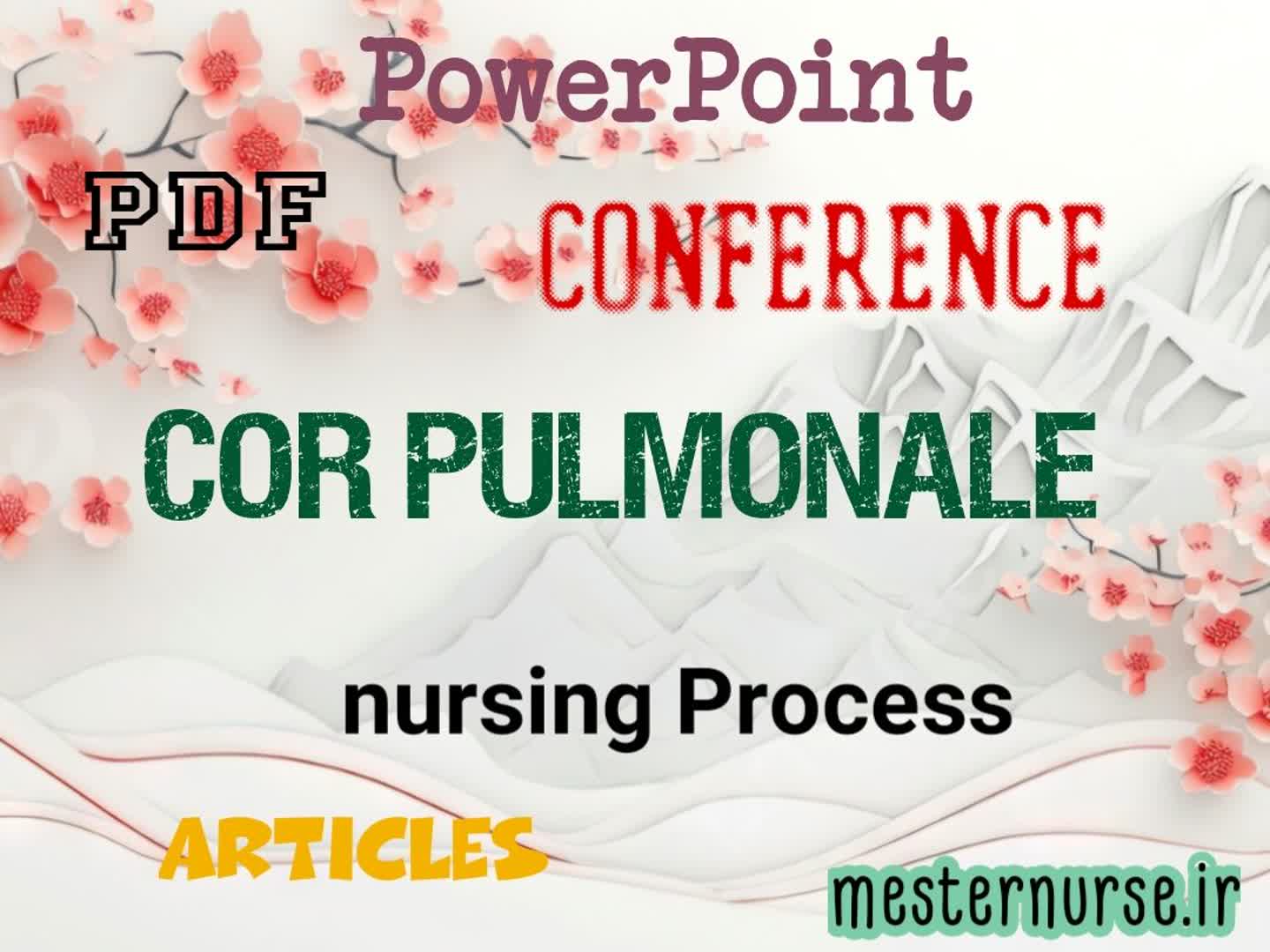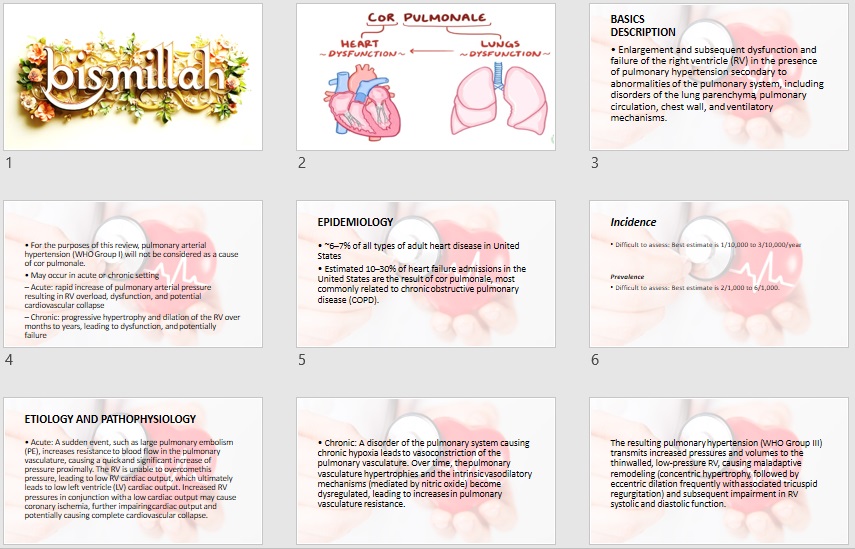توضیحات
BASICS DESCRIPTION COR PULMONALE POWER POINT
• COR PULMONALE POWER POINT: Enlargement and subsequent dysfunction and failure of the right ventricle (RV) in the presence of pulmonary hypertension secondary to abnormalities of the pulmonary system, including disorders of the lung parenchyma, pulmonary circulation, chest wall, and ventilatory mechanisms.
• For the purposes of this review, pulmonary arterial hypertension (WHO Group I) will not be considered as a cause of cor pulmonale.
• May occur in acute or chronic setting
– Acute: rapid increase of pulmonary arterial pressure resulting in RV overload, dysfunction, and potential cardiovascular collapse
– Chronic: progressive hypertrophy and dilation of the RV over months to years, leading to dysfunction, and potentially failure
EPIDEMIOLOGY
• ~6–7% of all types of adult heart disease in United States
• Estimated 10–30% of heart failure admissions in the United States are the result of cor pulmonale, most commonly related to chronic obstructive pulmonary disease (COPD).
COR PULMONALE POWER POINT Incidence
Difficult to assess: Best estimate is 1/10,000 to 3/10,000/year.
Prevalence
Difficult to assess: Best estimate is 2/1,000 to 6/1,000.
ETIOLOGY AND PATHOPHYSIOLOGY
• Acute: A sudden event, such as large pulmonary embolism (PE), increases resistance to blood flow in the pulmonary vasculature, causing a quick and significant increase of pressure proximally. The RV is unable to overcome this pressure, leading to low RV cardiac output, which ultimately leads to low left ventricle (LV) cardiac output.
Increased RV pressures in conjunction with a low cardiac output may cause coronary ischemia, further impairing cardiac output and potentially causing complete cardiovascular collapse.
• Chronic: A disorder of the pulmonary system causing chronic hypoxia leads to vasoconstriction of the pulmonary vasculature. Over time, the pulmonary vasculature hypertrophies and the intrinsic vasodilatory mechanisms (mediated by nitric oxide) become dysregulated, leading to increases in pulmonary vasculature resistance.
The resulting pulmonary hypertension (WHO Group III) transmits increased pressures and volumes to the thinwalled, low-pressure RV, causing maladaptive remodeling (concentric hypertrophy, followed by eccentric dilation frequently with associated tricuspid regurgitation) and subsequent impairment in RV systolic and diastolic function.
-
COR PULMONALE POWER POINT OTHER SLIDES IS:
- • Pulmonary disorders
- RISK FACTORS
- • Acute cor pulmonale
- • Chronic cor pulmonale
- GENERAL PREVENTION
- COMMONLY ASSOCIATED CONDITIONS
- DIAGNOSIS
HISTORY - PHYSICAL EXAM
- DIFFERENTIAL DIAGNOSIS
- DIAGNOSTIC TESTS & INTERPRETATION
- Initial Tests (lab, imaging)
- TREATMENT
- GENERAL MEASURES
- MEDICATION
- ISSUES FOR REFERRAL
- SURGERY/OTHER PROCEDURES
- ONGOING CARE
- DIET
- PATIENT EDUCATION
- PROGNOSIS
- REFERENCES
- CLINICAL PEARLS
توضیحات تکمیلی
| فرمت | PPT |
|---|---|
| زبان | انگلیسی |
| حجم | 1MB |
| تعداد اسلاید | 44 |


























نقد و بررسیها
هنوز بررسیای ثبت نشده است.